A
Auto Express
Guest
McLaren has confirmed that it will introduce a new hybrid supercar in the first half 2021, intended to sit between the GT and 720S, and using a brand new chassis.
Previewed here in these official teaser images, the new car - the name of which is still unknown - has also been spied in the clutches of McLaren test drivers over the last few months, with spy shots making it obvious that the firm’s next supercar will use hybrid power.
McLaren has now confirmed use of an electrified powertrain, which will be a significant departure from the firm’s current line-up.
All McLaren models since the P1 of 2013 have used V8 engines, developed in conjunction with specialist Ricardo, and 3.8-litre or 4.0-litre in size. The new ‘High-Performance-Hybrid’ McLaren supercar will use a newly developed turbocharged V6 engine, in combination with a battery and electric motor, and will also be capable of all-electric running.
The new supercar’s design uses many of the same themes as the McLaren GT, sharing the same high-mounted, slim LED headlamps, similar engine intakes and right-angled tail. Even the shape of the model’s glasshouse looks familiar and, underneath the camouflage, the bumper vents appear to share kindred styling.
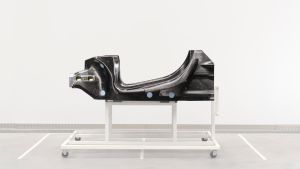
image
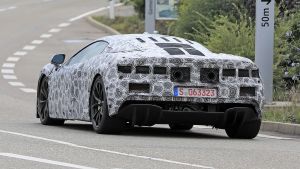
image
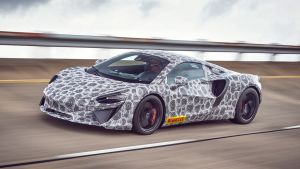
image
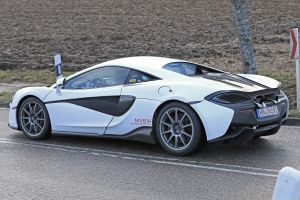
McLaren sports series spy - side
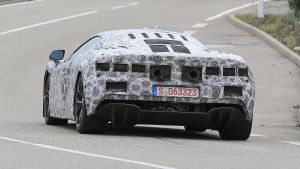
image

image
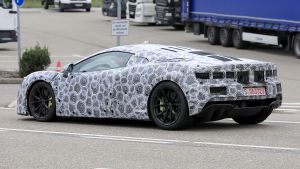
image
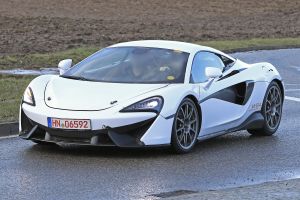
McLaren sports series spy - front
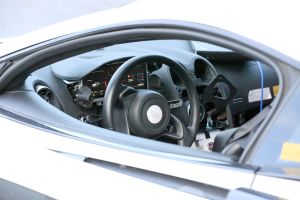
McLaren sports series spy - interior
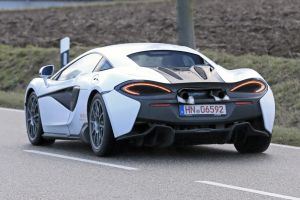
McLaren sports series spy - rear
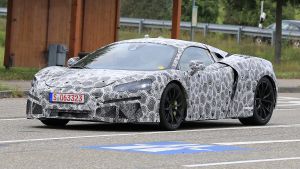
image

image
The next-generation supercar’s bodywork will be propped up by an all-new carbon-fibre monocoque dubbed McLaren Lightweight Carbon Architecture. It replaces the firm’s old Monocell platform, which has been a base for McLaren’s production cars since the original MP4-12C. With the arrival of this platform, McLaren will retire its Sports Series line-up, too.
The new chassis has been designed to accommodate the batteries and electrical architecture required for hybrid drive – and it also incorporates fresh weight-saving tactics to offset the added bulk that comes with these components. McLaren has confirmed that the platform will be manufactured at its £50 million composites base in Sheffield.
McLaren’s Automotive boss, Mike Flewitt, described the new chassis as "every bit as revolutionary as the MonoCell we introduced with the 12C, when we first embarked on making production vehicles a decade ago.”
He added: "This new, ultra-lightweight carbon-fibre chassis boasts greater structural integrity and higher levels of quality than ever before. Our advanced expertise in lightweight composites processes and manufacturing, combined with our experience in cutting-edge battery technology and high-performance hybrid propulsion systems, mean that we are ideally placed to deliver to customers levels of electrified high-performance motoring that until now have simply been unattainable."
The push towards hybrid drive forms part of McLaren’s £1.2 billion Track 25 business plan, which will see 18 new petrol-hybrid powered McLarens launched by 2025. The company says it is currently evaluating a new high-power battery pack for a full EV setup that will offer a claimed 30 minutes of electric range around a race track.
Find out what happened when we pitched the McLaren GT against the Porsche 911 Turbo S here…
Continue reading...
Previewed here in these official teaser images, the new car - the name of which is still unknown - has also been spied in the clutches of McLaren test drivers over the last few months, with spy shots making it obvious that the firm’s next supercar will use hybrid power.
- SEE MORE Best supercars 2020
McLaren has now confirmed use of an electrified powertrain, which will be a significant departure from the firm’s current line-up.
All McLaren models since the P1 of 2013 have used V8 engines, developed in conjunction with specialist Ricardo, and 3.8-litre or 4.0-litre in size. The new ‘High-Performance-Hybrid’ McLaren supercar will use a newly developed turbocharged V6 engine, in combination with a battery and electric motor, and will also be capable of all-electric running.
The new supercar’s design uses many of the same themes as the McLaren GT, sharing the same high-mounted, slim LED headlamps, similar engine intakes and right-angled tail. Even the shape of the model’s glasshouse looks familiar and, underneath the camouflage, the bumper vents appear to share kindred styling.

image

image

image

McLaren sports series spy - side

image

image

image

McLaren sports series spy - front

McLaren sports series spy - interior

McLaren sports series spy - rear

image

image
The next-generation supercar’s bodywork will be propped up by an all-new carbon-fibre monocoque dubbed McLaren Lightweight Carbon Architecture. It replaces the firm’s old Monocell platform, which has been a base for McLaren’s production cars since the original MP4-12C. With the arrival of this platform, McLaren will retire its Sports Series line-up, too.
The new chassis has been designed to accommodate the batteries and electrical architecture required for hybrid drive – and it also incorporates fresh weight-saving tactics to offset the added bulk that comes with these components. McLaren has confirmed that the platform will be manufactured at its £50 million composites base in Sheffield.
McLaren’s Automotive boss, Mike Flewitt, described the new chassis as "every bit as revolutionary as the MonoCell we introduced with the 12C, when we first embarked on making production vehicles a decade ago.”
He added: "This new, ultra-lightweight carbon-fibre chassis boasts greater structural integrity and higher levels of quality than ever before. Our advanced expertise in lightweight composites processes and manufacturing, combined with our experience in cutting-edge battery technology and high-performance hybrid propulsion systems, mean that we are ideally placed to deliver to customers levels of electrified high-performance motoring that until now have simply been unattainable."
The push towards hybrid drive forms part of McLaren’s £1.2 billion Track 25 business plan, which will see 18 new petrol-hybrid powered McLarens launched by 2025. The company says it is currently evaluating a new high-power battery pack for a full EV setup that will offer a claimed 30 minutes of electric range around a race track.
Find out what happened when we pitched the McLaren GT against the Porsche 911 Turbo S here…
Continue reading...
